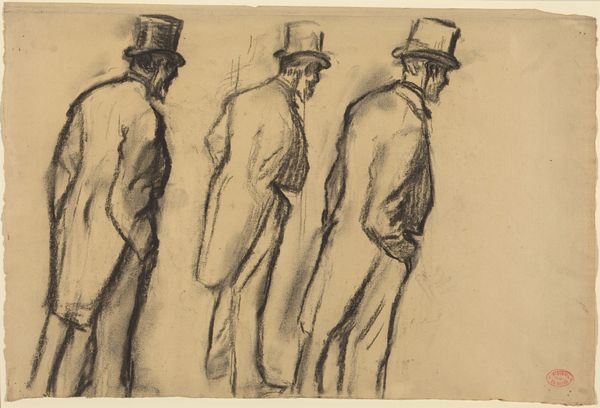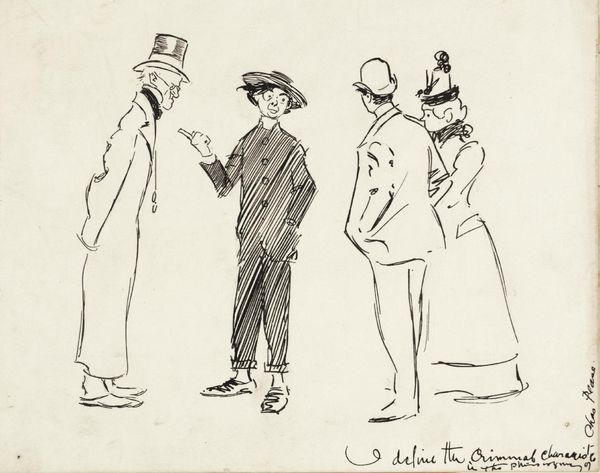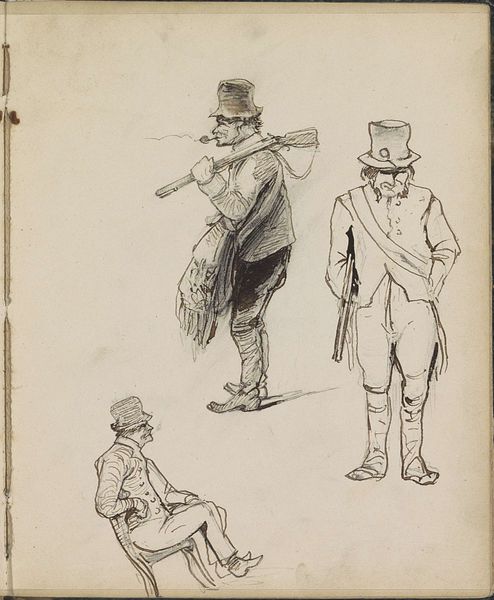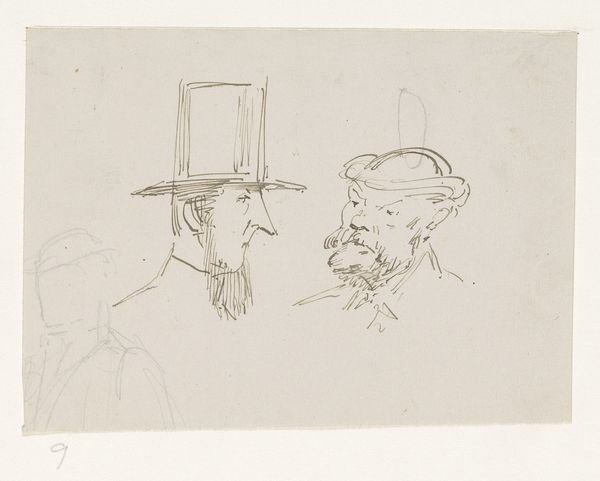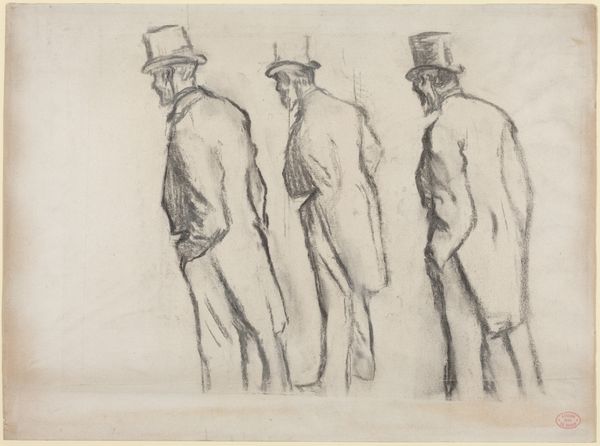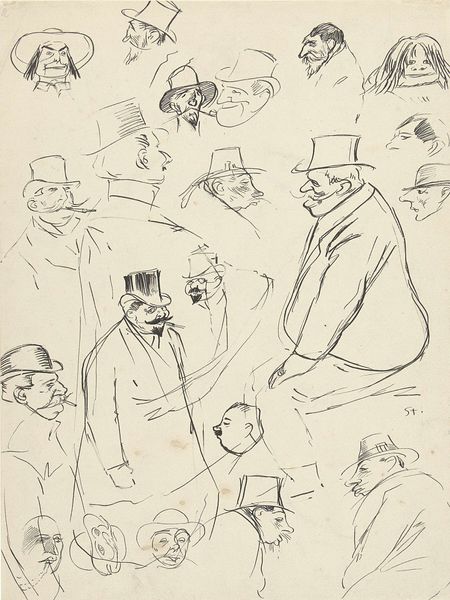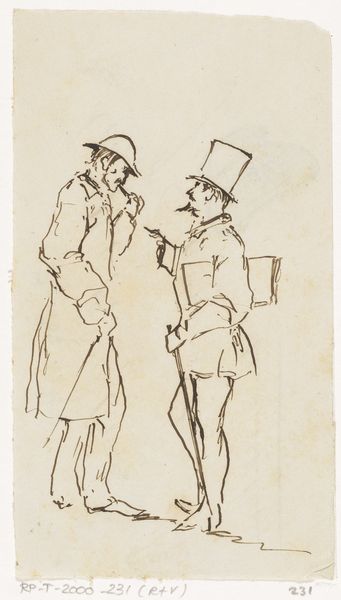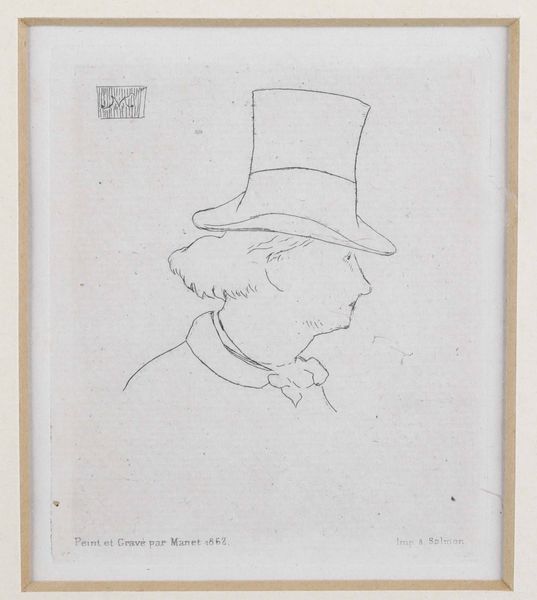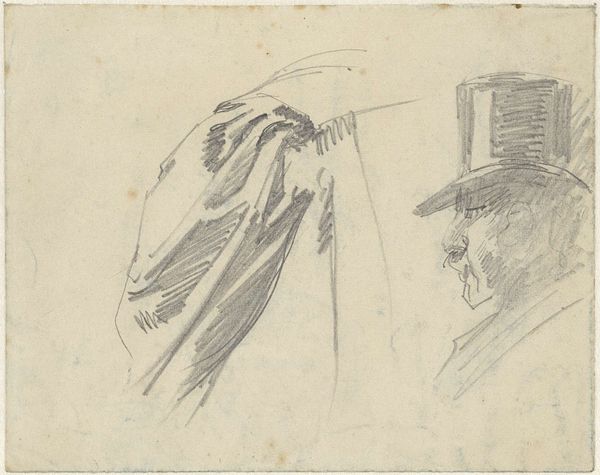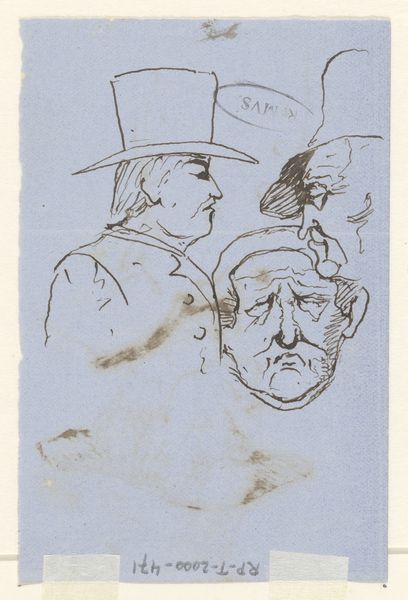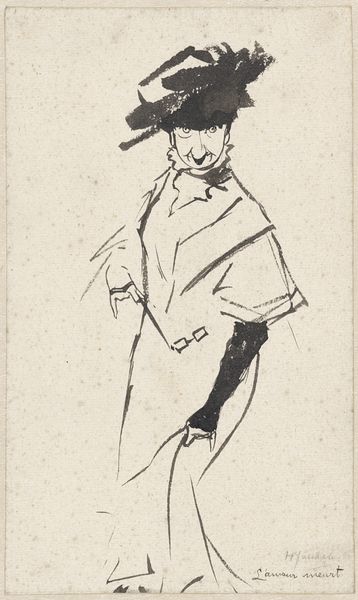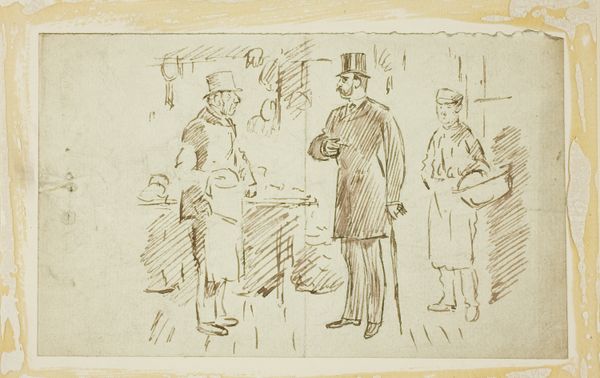
drawing, pencil
#
portrait
#
drawing
#
figuration
#
pencil
#
genre-painting
#
academic-art
Dimensions: height 88 mm, width 133 mm
Copyright: Rijks Museum: Open Domain
Curator: We're looking at "Three Sketches of Men in Top Hats" by Jan van Essen. This work, created sometime between 1864 and 1936, is a pencil drawing currently held at the Rijksmuseum. Editor: There's an immediacy to it. The figures are spare, almost ghostly. You get the feeling they’re quickly jotted down impressions rather than formal portraits. The economy of the pencil work really strikes me. Curator: Absolutely. And if we think about the social context, the top hat itself speaks volumes. It represents bourgeois respectability, a certain class aspiration and performance. The work offers, in some ways, a sharp critique on class and identity construction within Dutch society during that time. These men are putting on a uniform, projecting an ideal. Editor: It's intriguing how the artist rendered these figures using simple means—pencil on paper—but their garments represent the Industrial Age when cloth manufacturing expanded, offering affordability for middle and upper class men and women. Notice how the figures' attire signifies their roles in society, reflecting societal changes. Curator: That connects to larger issues of social stratification. How can we read dress within the context of power dynamics, even the gaze, the way the figures present themselves, as active negotiation, or a struggle against it. Editor: Precisely, by choosing a readily available medium like pencil, van Essen might have been critiquing the increasing mass production and commodification symbolized by these very figures. The fleeting nature of the sketch contrasts with the aspiration toward permanence they project. Curator: We often perceive sketches as precursors to “real” art, like the intellectual labor is somehow externalized from the labor of "finish" of other media. However, this brings attention to these working-class forms of representation. What kind of dialogue does it elicit? Editor: Yes! It also made me wonder if the artist might have used recycled paper, as was customary then. Investigating these physical components reveals how art intertwines with economics. Curator: Right, thinking about labor and the raw materials disrupts the myth of the solitary, inspired genius. We get to question power relations by shifting our gaze from the content to the means of production. Editor: Well, after our brief but hopefully illuminating discussion, I’m now appreciating the piece as an insight of Dutch society at that period. Curator: Agreed. I would consider it a snapshot of cultural and class-bound performativity, not just for the elite, but, perhaps, most specifically for a certain layer of men.
Comments
No comments
Be the first to comment and join the conversation on the ultimate creative platform.

